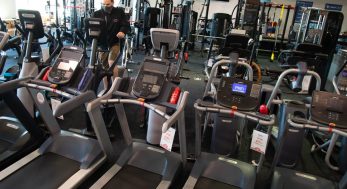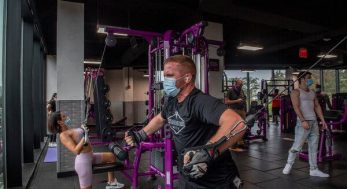
djiledesignGetty Images
Your Personal PT, Rachel Tavel, is a Doctor of Physical Therapy (DPT) and Certified Strength and Conditioning Specialist (CSCS), so she knows how to get your body back on track when it’s out of line. In this weekly series, she gives you tips on how to feel better, get stronger, and train smarter.
Soreness and pain from workouts can happen to the best of us. Maybe the issues started after you missed a few upper body workouts in a row and you’re feeling a little soft—so when you finally get back into the swing of things and hit the gym, you hit it hard. Maybe too hard. The next day, you wake up with sore shoulders.
The good news? As long as the feeling of soreness goes away within 24 to 72 hours, it can be a sign that you did some real work. You loaded your body just enough to cause “microtrauma” to the tissue (sounds worse than it is) and that feeling can actually indicate you made some changes. The bad news? You’re feeling all that work, and it doesn’t feel great.
Delayed onset muscle soreness, or DOMS, can contribute to a feeling of fatigue, soreness, weakness, stiffness and even pain. It usually occurs after a bout of high intensity training during which the muscles are eccentrically loaded to a degree that causes small tears in the muscle fibers. While not completely understood, these microtears in turn may lead to increased protein synthesis and the body adapting to the new stress put upon it. Eccentric loading of the muscles is an important way of building strength.
But there is a fine line between loading the muscles and overloading the muscles, so DOMS can also function as a signal that you’re doing too much.
If you are experiencing sore shoulders, there are a few things you can do to ease the pain and discomfort and accelerate the recovery process. Stretching, unfortunately, is not one of them.
Your Move: The evidence on how to treat DOMS is mixed, but there are a few methods you can try. To reduce inflammation and improve mobility for those sore shoulders, you’ll want to increase blood flow to the area.
This can be done a few ways: Try applying moist heat for 10 to 15 minutes 2 to 3 times a day, gentle massage, or low intensity activities that use and move the affected muscles without straining them. A sauna session and a hot bath or shower may also help.
If you’re experiencing pain, consider anti-inflammatories, but don’t use ice—research indicates ice may work against you in this case. Make sure you’re consuming a good amount of water and protein.
Most importantly? Be patient. Symptoms should reduce within 1 to 3 days. If your issues persist or intensify, consider seeing an MD or Physical Therapist to rule out injury.

